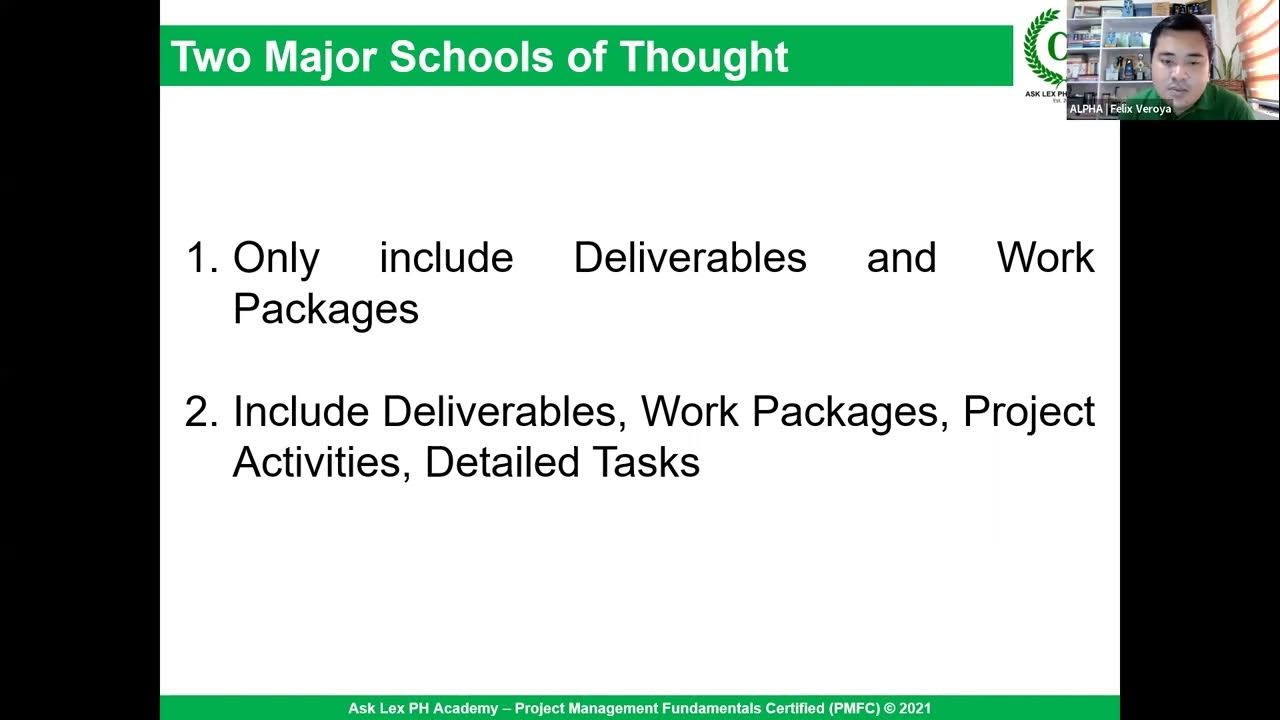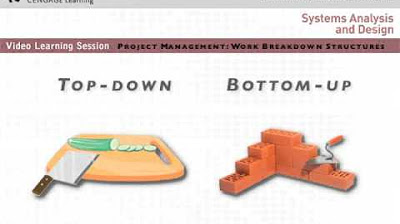5 Tips From Ricardo Vargas To Master A Work Breakdown Structure
Summary
TLDRThis video script offers five essential tips for mastering the creation of Work Breakdown Structures (WBS) in project management. It emphasizes the importance of including all work, avoiding verbs, preventing duplication of efforts, and structuring the WBS delivery-based rather than time-based. Additionally, it advises against single-child items to ensure a comprehensive and well-organized project scope. The speaker shares personal best practices and invites viewers to access downloadable materials and further resources.
Takeaways
- 📚 The Work Breakdown Structure (WBS) is a tool for organizing ideas and dividing a project into smaller components.
- 🔍 WBS can be created through decomposition (breaking down larger components) or aggregation (combining smaller components).
- 🏷️ All work required for a project must be included in the WBS to ensure nothing is missed and to provide a comprehensive view of the project scope.
- 🚫 Avoid using verbs in WBS elements; instead, use substantives to describe the work packages clearly and to avoid confusion about execution items.
- 🔑 Writing WBS items in all caps can be a personal best practice to distinguish them from tasks in project management software.
- 🔄 Do not duplicate efforts within the WBS; each component should be unique to prevent confusion and ensure accurate budgeting and scheduling.
- 📅 Disregard time-based WBS; focus on delivery-based WBS that reflects the components of what is being planned to deliver, rather than phases.
- 📈 Use network diagrams, Gantt charts, or Kanban boards for chronological representation of work, not the WBS.
- 🚫 Avoid 'single child' items in the WBS, which means not breaking down a component into just one smaller piece, as this goes against the purpose of decomposition.
- 📋 Work packages are the lowest level of the WBS and should contain task lists with action verbs for execution.
- 🌟 The WBS helps in structuring thoughts and work, making it easier to understand and manage the full scope of a project.
Q & A
What is a Work Breakdown Structure (WBS)?
-A Work Breakdown Structure (WBS) is a tool used to organize the work within a project. It breaks down the project into smaller components, making it easier to manage and understand the scope of the work involved.
How can the WBS help in organizing ideas and dividing bigger components into smaller pieces?
-The WBS helps by providing a hierarchical decomposition of the project into smaller, more manageable work packages. This allows for better planning, execution, and tracking of the project's progress.
What are the two methods to create a WBS?
-The two methods to create a WBS are decomposition, where you break down larger components into smaller ones, and aggregation, where you combine smaller elements into larger components based on their affinity.
Why is it important that all work is included in the WBS?
-Including all work in the WBS ensures that every aspect of the project is accounted for, preventing any work from being overlooked and ensuring the project's completeness.
What is the significance of avoiding the use of verbs in the WBS elements?
-Avoiding verbs in WBS elements helps to clarify that the elements represent divisions of work rather than actions or tasks. This distinction is important for clear communication and understanding of the project's scope.
Why should WBS elements be written in all caps according to the script?
-Writing WBS elements in all caps is a personal best practice to distinguish them from tasks in project management software, which may not differentiate between WBS elements and tasks.
What does the script suggest to avoid in terms of duplicating efforts within the WBS?
-The script suggests avoiding duplicating efforts by not listing the same work under different headings. This ensures that the WBS accurately represents the unique components of the project without redundancy.
Why does the script argue against using a time-based approach for the WBS?
-The script argues against a time-based WBS because it assumes a chronological approach to project work, which may not always be the case. The WBS should focus on the components of the deliverables rather than the phases or time frames.
What is the concept of 'single child' in the context of a WBS, and why should it be avoided?
-A 'single child' in a WBS refers to a situation where a component is broken down into only one sub-component. This should be avoided as it does not truly reflect the decomposition process, which should result in multiple smaller components from each parent element.
What is the purpose of a task list in relation to WBS work packages?
-A task list is associated with each work package and contains the specific actions (using verbs) that need to be executed to complete the work package. It provides a detailed breakdown of the work at the lowest level of the WBS.
How can the script's tips help in delivering successful projects?
-The tips provided in the script can help in delivering successful projects by ensuring that the WBS is comprehensive, clear, and well-structured. This leads to better project planning, execution, and ultimately, successful completion.
Outlines

此内容仅限付费用户访问。 请升级后访问。
立即升级Mindmap

此内容仅限付费用户访问。 请升级后访问。
立即升级Keywords

此内容仅限付费用户访问。 请升级后访问。
立即升级Highlights

此内容仅限付费用户访问。 请升级后访问。
立即升级Transcripts

此内容仅限付费用户访问。 请升级后访问。
立即升级5.0 / 5 (0 votes)






